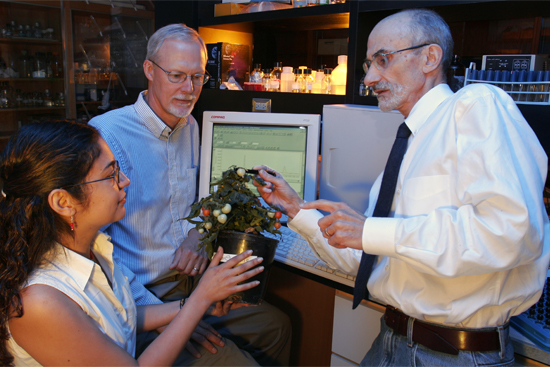By Jinghong Chen | Bond Life Sciences Center

People often think of metabolism as a perfect network. But that assumption is simply not accurate.
Andrew Hanson, an eminent scholar and professor at the University of Florida, describes the misunderstanding as “the power of a paradigm.” American biochemist Albert Lehninger spread the misunderstanding in his classic textbook “Biochemistry”, in which the message he communicated to generations of students was: metabolism is a beautiful machine that functions flawlessly.
Hanson challenges this “metabolism is perfect” paradigm using illustrations from different kinds of organisms in his lecture. He will speak in Bond LSC’s Monsanto Auditorium at 1 p.m. Friday April 14, during the 33rd annual Missouri Life Sciences Week.
For every living organism, metabolism is the sum of every chemical reaction that occurs to maintain life. This sum contains all the metabolites — small molecules created at each level of cell processes and final products — that share a part in the growth, development, reproduction and running of cells and whole organisms.
However, enzymes can make mistakes; many chemical compounds in cells are unstable and undergo spontaneous reactions. The consequences of enzyme errors and chemical side-reactions are, at best, unwanted and sometimes toxic, so organisms have developed mechanisms – damage-control systems – to deal with the consequences of damage.
Hanson’s lab has studied metabolite damage and the damage-control systems that plants and microorganisms employ to cope. But the impact of metabolic problems also reaches into the human domain, causing disease from failure or mutation of damage repair enzymes. “It matters in aging humans and animals a great deal, because aging is the result of cumulative damage,” Hanson said.
Plants are also afflicted by metabolite damage. Under environmental stress such as high temperature or water loss, the error rate of enzymes and rates of unwanted chemical reactions can go up.
The understanding of metabolite damage could also advance metabolic engineering, which is a purposeful manipulation by combining metabolic pathways and DNA techniques to produce desired products. After creating new pathways in an organism, it may fail to cope with the abnormal reactions produced by the new pathways. To fix the problem, the only solution might be to install the required damage control enzymes.
Hanson’s lab hopes to identify new or unsuspected damage reactions, and enzymes that repair or prevent damage. They also are working to connect with metabolic engineering groups that install modified pathways in plants and microbes to study sources of damage and propose solutions.
Metabolism is not perfect. However, after studying its imperfection for years, Hanson concluded, “life is put together in a very beautiful and even more powerful way than we first realize. It makes a lot of mistakes, but it also fixes them so well that we do not even notice them.”
Hanson’s lecture on “Fixing or safely trashing broken metabolites and why it matters” is this year’s Charles W. Gehrke distinguished lecture. Gehrke, a longtime MU professor of Biochemistry, was selected by NASA to analyze rocks retrieved from the first moon landing for any traces of extraterrestrial life. He died in 2009.
Hanson’s lecture is free and open to the public as part of Missouri Life Sciences Week. It occurs at 1:00 on Friday, April 14 in Bond LSC’s Monsanto Auditorium. See more about events during the week at bondlsc.missouri.edu/life-sciences-week.

